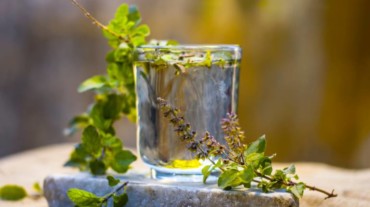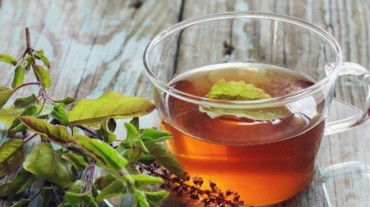
Holy basil, known as tulsi in most Indian homes, is widely available all across the country. This is so because of its great medicinal qualities that can treat throat congestion, boost immunity and strengthen our overall health. It is believed that having two to three tulsi leaves on an empty stomach can contribute to amplifying its goodness.
Tulsi is an integral part of Ayurveda, with most people choosing to grow it at home. There’s no doubt that tulsi has multiple benefits but it needs to be consumed the right way for the right effects. Turns out, chewing it might be making you miss out on those benefits.
We contacted Lovneet Batra, a renowned nutritionist from Delhi-NCR to understand why this is so. According to her, “The mercury content present in tulsi is not good for your enamel. Thus, you shouldn’t chew on them.”
Yes, tulsi leaves contain mercury
When you’re chewing on tulsi leaves, the mercury content gets released into your mouth. This can damage your teeth and cause discolouration. Moreover, tulsi leaves are slightly acidic in nature and your mouth is alkaline. This can cause the enamel of your teeth to wear off sooner.
To be on the safe side, you can consume tulsi in the following ways:
Method 1: Tulsi tea
The easiest way to consume tulsi is by adding it to your tea. Add tulsi leaves in water and bring it to boil. Let it simmer for 8 to 10 minutes. You can also add honey and lemon for extra flavour. The best thing about this tea is that it is caffeine-free. It isn’t just great for your immunity but also beneficial for people who have high blood sugar levels.

Method 2: Tulsi-infused ghee
Make a powder using dried tulsi leaves. Now, for every 2 teaspoons of ghee, add ½ a teaspoon of tulsi powder. You can always adjust the quantity according to your taste. Add it to your chapati, or consume it as it is.
Method 3: Tulsi juice
Take about 10 to 15 tulsi leaves for a cup of water. You can add honey and lemon juice if you want. Mix the ingredients in a blender. Using a strainer, strain the juice and enjoy!
Tulsi can be really beneficial for you as long as you avoid chewing the leaves and consume it the right way.
Select Topics of your interest and let us customize your feed.
PERSONALISE NOW